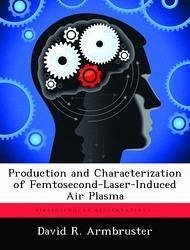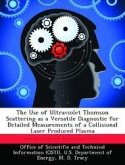The purpose of this research was to produce, characterize, and optimize laser-induced air plasma as a preliminary step in using theplasma as a source of terahertz radiation. An 800 nanometer, 50 femtosecond, 0.75 Watt, pulsed Ti:Sapphire laser system was usedas the source infrared beam. A beam expander was used to expand the beam to a diameter of approximately 6.5 mm, and the beamwas focused through a 25 mm focal length achromatic lens to produce laser-induced plasma in ambient air. A 40 kHz ultrasonictransducer was used to detect the plasma. A second harmonic generation crystal was placed within the beam expander to generate400 nm blue light, enabling production of THz in the plasma via four wave mixing; a third-order nonlinear process. Whileplasma-produced THz was not detected, all the preliminary groundwork was accomplished, including full characterization of theplasma, blue light, and alignment of the system to generate and detect THz. The electro-optic detection apparatus was assembled,aligned and used to successfully detect a diagnostic THz signal.








